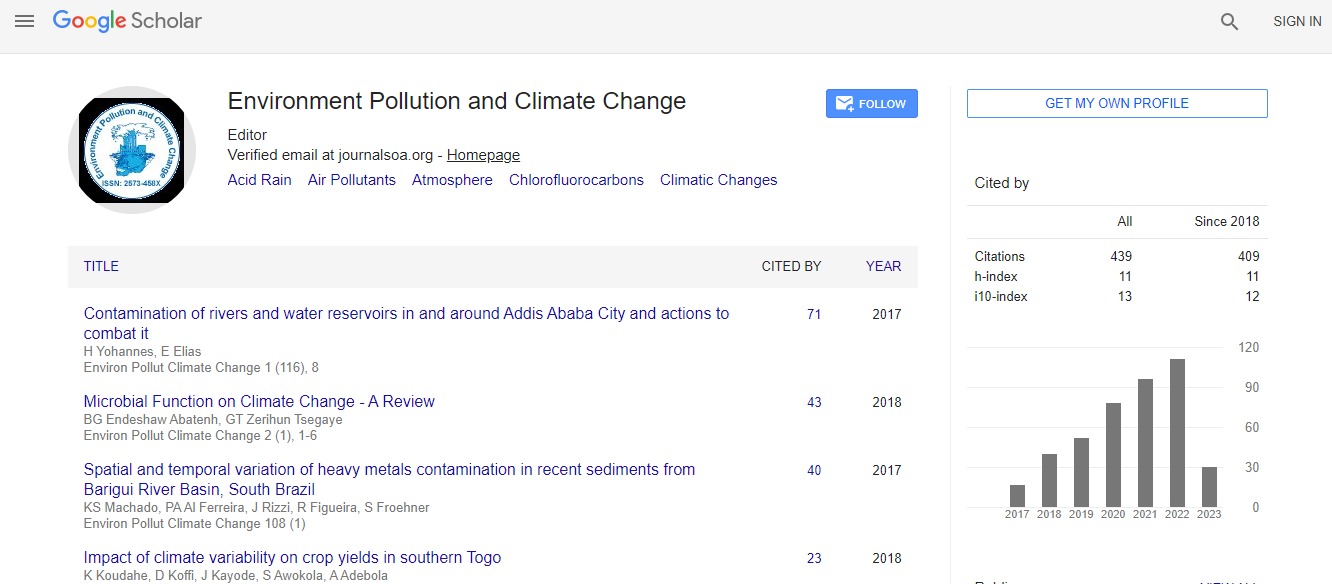Research Article
Trend Analysis and Challenges of Adaptations to Climate Change in Hararghe, Ethiopia
Eba Muluneh Sorecha*School of Natural Resources Management and Environmental Sciences, Haramaya University, P.O. Box. 138 Dire Dawa, Ethiopia
- *Corresponding Author:
- Eba Muluneh Sorecha
School of Natural Resources
Management and Environmental Sciences
Haramaya University, P.O. Box. 138 Dire Dawa, Ethiopia
Tel: +251946428388
E-mail: ebamule1@gmail.com
Received date: February 24, 2017; Accepted date: March 22, 2017; Published date: March 29, 2017
Citation: Sorecha EM (2017) Trend Analysis and Challenges of Adaptations to Climate Change in Hararghe, Ethiopia. Environ Pollut Climate Change 1:118.
Copyright: © 2017 Sorecha EM. This is an open-access article distributed under the terms of the Creative Commons Attribution License, which permits unrestricted use, distribution, and reproduction in any medium, provided the original author and source are credited.
Abstract
In Ethiopia, climate change is a key emerging threat to the livelihoods of rural poor and marginalized groups. Hence, an adaptation measures to the changing climate is critical, which in turn require the perception that the climate is under a changing. The study was conducted in a selected rural Kebeles of Chiro district, Hararghe, Ethiopia to analyze the trends of climate change and explore the challenges for adaptation over the last three decades. Qualitative and quantitative methodologies have been employed. Thirty years of historical climate data were collected from National Meteorological Agency of Ethiopia. INSTAT+3.37 version software and Mann-Kendall trend test was employed to analyze the data. Socio-economic survey data were collected from three rural Kebeles of Chiro district. A total of 75 households, 25 households from each kebele were recruited after clustering of villages and randomizing the samples. SPSS version 16.0 was employed to analyze the data. The results of the study revealed that the annual mean temperature over Chiro district was 20.3ºC, showing an increasing trend by 1.8ºC/ year and average annual rainfall was 927 mm/year, showing a decreasing trends by 19.2 mm/year in the last three decades. The mean annual maximum and minimum temperature in the study area was 27.87 and 12.72ºC, respectively. Moreover, the study shows that all seasons had a positive temperature trend. Results of survey data indicated that 83 and 79% of the sampled households have well perceived the increasing trends in annual temperature and decreasing trends in annual rainfall, respectively. Therefore, farmers in the area have been already practicing adaptation mechanisms, primarily, planting cash crops: coffee (Coffee arabica) and Khat (Catha edulis), and animal fattening. However, lack of timely and easily accessible information on agriculturally important weather elements were the major challenges in addition to the scarcity of lands.

 Spanish
Spanish  Chinese
Chinese  Russian
Russian  German
German  French
French  Japanese
Japanese  Portuguese
Portuguese  Hindi
Hindi 
